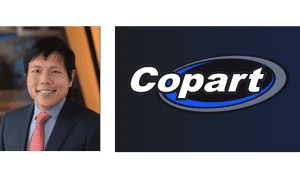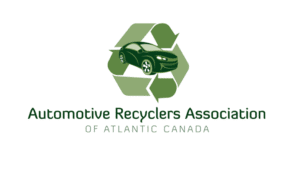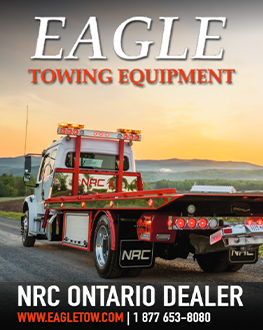By Michael Raine
Toronto, Ontario — August 10, 2011 — On Wednesday morning the Ontario Automotive Recyclers Association (OARA), the Canadian Vehicle Manufacturers Association (CVMA), and the Canadian Automobile Association (CAA) held a joint news conference at Queen’s Park to call on all of Ontario’s political parties to endorse the newly developed, industry led, environmental management system for end-of-life vehicles (ELV). The environmental management system would be the first of its kind in North America.
As Steve Fletcher, executive director of OARA, explained at the news conference, the ELV Industry Standard (ELV-IS) for environmental management has been developed by OARA and the CVMA and is designed to bring common standards to the ELV recycling sector. The ELV-IS would ensure that the half million passenger vehicles that reach the end of their useful life each year in Ontario are responsibly handled and the people handling vehicles meet a high standard.
“Without any regulated standards in Ontario, vehicles flow to the lowest standard,” warned Fletcher during the press conference. He noted that currently “there is no economic incentive, there is no regulatory incentive to do the right thing.”
Fletcher said that two out of three ELVs generated in Ontario annually are not managed to any environmental standard. According to OARA, the new system would end the harmful practices that are currently too common.
“Automobiles are one of, if not the most, recyclable complex consumer products are the market today. In fact, 85 percent of a vehicle is readily recyclable,” said Mark Nantais, president of the CVMA, during the press conference. “So we know that any effort to improve end-of-life environmental practices has to include the well established auto recycling industry in Ontario and, for that matter, across Canada.”
According to OARA, CVMA, and CAA, the ELV-IS, if backed by government and effectively regulated and enforced, would:
· Protect Ontario’s lands and waterways from hazardous and toxic substances such as brake and transmission fluid, fuel, engine oil, antifreeze, and mercury by ensuring that the fluids are responsibly removed and recycled.
· Removing these fluids would also reduce scrap yard fire, which are often caused when combustible car fluids come into contact with sparks and car batteries
· Increase the reuse and recycling of vehicle parts and materials, drive continuous improvement in auto recycling while avoiding unnecessary economic impacts to the auto recycling businesses
· Create up to 1,500 incremental green jobs in the auto recycling sector
· Reduce instances of fraudulent swapping of Vehicle Identification Numbers (VIN) by properly retiring them once a vehicle is recycled
· Support vehicle manufacturers by ensuring access to a regulated system for ELV recycling where manufacturers choose to establish their own vehicle retirement programs and;
· Avoid consumer eco-fees on vehicles.
Fletcher said the eco-fees could be avoided because, unlike other products subject to similar programs, ELVs have an inherent value because of their reusable parts and scrap metal. He added, “cars are not waste, they’re an asset that needs to be managed.”
The environmental standards incorporated in the ELV-IS are the product of Environment Canada’s national vehicle scrappage program, Retire Your Ride (RYR), said Fletcher. As part of RYR, participating recyclers had to comply with the National Code of Practice for Auto Recycling. Since then, Fletcher said OARA has been working the CVMA and the Association of International Automobile Manufactures of Canada (AIAMC) to “take that standard and create a means to ensure that all recyclers are meeting the basic requirements.” Fletcher said they have also been working with Environmental Defence and the Recycling Council of Ontario to vet those standards and the ELV-IS. All in all, it has been a roughly ten-year process.
This lengthy process has culminated in a discussion paper, a national model of which has been submitted to the Canadian Council of Ministers of the Environment. “Although we are talking about Ontario today, the model is scalable up on a national basis,” said Fletcher. “The same problems exist across Canada and the same solutions would work there as well.”
The next step in the process involves setting up a not-for-profit ELV-IS council that will be governed by a multi-stakeholder board and will provide the necessary oversight, explained Fletcher.
The council would not have the authority to levy fees on non-compliant businesses but instead would control of the licensing of auto recyclers. A condition of licensing would be that anyone wishing to drop off an ELV to a licensed recycler would be able to do so free of charge.
Implementing the new environmental management system requires the Ontario governments to amend the province’s Environmental Protection Act and the Safety and Consumer Statute Administration Act to facilitate the formation of the oversight body.
Unfortunately for those involved in the process, Ontario is currently in the middle of an election campaign. “During the run-up to in an election it’s difficult to gets commitments,” noted Fletcher during the Q&A session following the press conference. However, he added, “We’ve had positive discussions [with the government]. I think that they’re looking at the policy side of what we’re putting in place and the level of cooperation that’s happening in the various sectors. They’re seeing it as a logical policy option that they are very interested in.”























